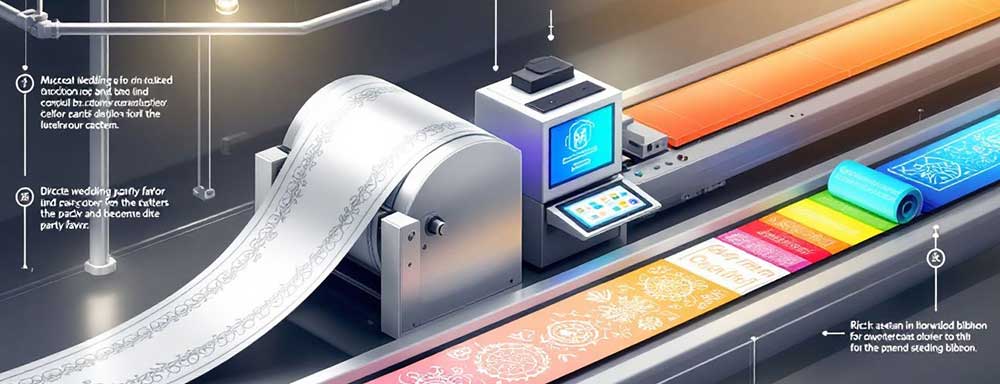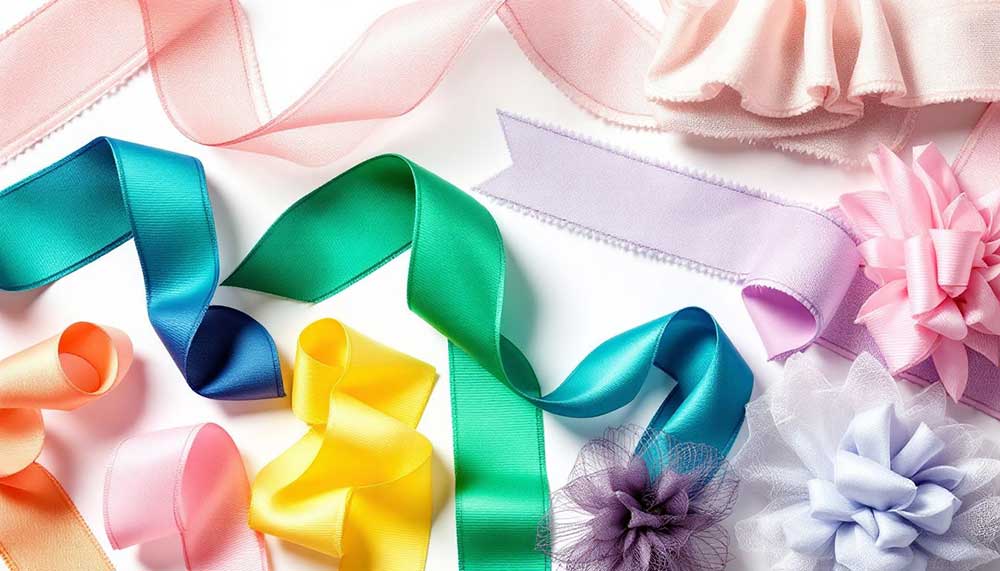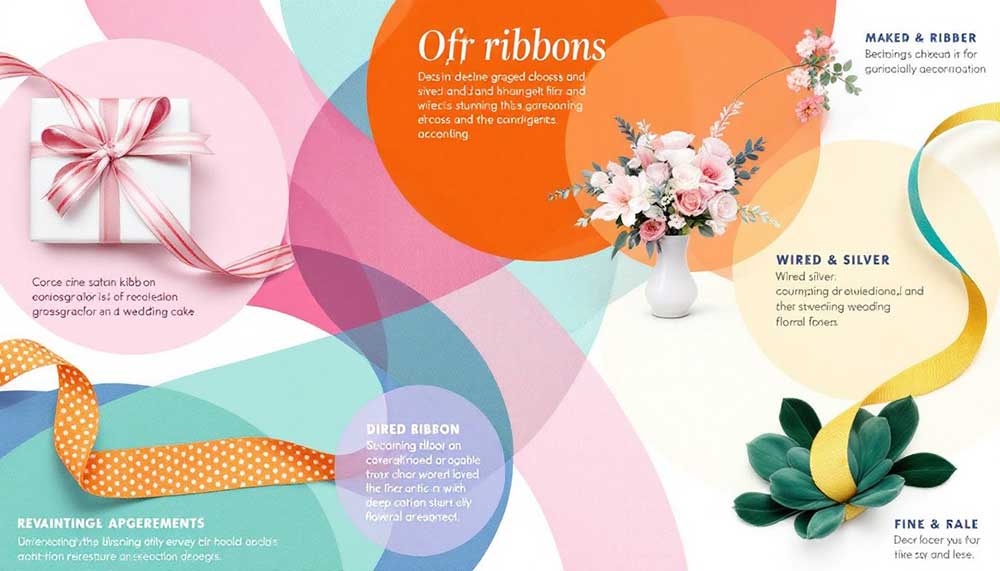The Evolution of the Ribbon Industry: Key Trends & Insights

- Key Takeaways
- The Manufacturing Process
- Types of Ribbons and Materials
- Innovations in Ribbon Manufacturing
- Key Players in the Ribbon Industry
- Applications of Ribbons in Various Sectors
- Quality Testing in Ribbon Selection
- Sustainability in Ribbon Production
- Future Trends in the Ribbon Industry
- How to Enter Ribbon Industry
- Summary
- Frequently Asked Questions
The ribbon industry includes applications in fashion, packaging, and decorations. This article explores industry trends, manufacturing processes, key players, and recent innovations.
Key Takeaways
-
The ribbon manufacturing process involves careful material selection, weaving techniques like jacquard, and various finishing processes to ensure quality and aesthetics.
-
Sustainable practices are increasingly important in the ribbon industry, with a rise in eco-friendly materials and innovations that reduce environmental impact.
-
Technological advancements, such as digital printing and Industry 4.0 principles, are transforming the ribbon industry by enhancing customization and production efficiency.
The Manufacturing Process

The journey of a ribbon begins with the important careful selection set of raw materials.
Silk, polyester, and cotton are among the most commonly used fabrics in ribbon production, each chosen for their unique properties and applications.
-
Silk is prized for its luxurious sheen and softness, making it a favorite for high-end projects and delicate decorations.
-
Polyester offers durability and versatility, ideal for everyday use and industrial applications.
-
Cotton provides a balance between softness and strength, perfect for a wide range of DIY projects.
Once the materials are sourced, the next step is weaving. This process involves interlacing threads to create the ribbon’s structure. One of the most intricate weaving techniques is jacquard weaving, which allows for complex patterns and designs to be woven directly into the fabric. This technique is often employed to create detailed and decorative ribbons that add a touch of sophistication to any project. The precision and artistry involved in jacquard weaving highlight the skill and craftsmanship of ribbon weavers.
After weaving, the ribbons undergo various finishing processes to enhance their appearance and functionality. Dyeing is a critical step where ribbons are colored to match specific design requirements. Printing techniques, including screen printing and digital printing, add patterns and logos to the ribbons, making each piece unique. Edge-finishing techniques such as heat-sealing and hemming ensure that the ribbons do not fray, maintaining their quality and durability. These finishing touches are what make ribbons not only beautiful but also practical for a wide range of applications.
The manufacturing process is a delicate balance of art and science, combining traditional craftsmanship with modern technology to manufacture ribbons that are both functional and aesthetically pleasing. Each step, from material selection to finishing, is meticulously executed to produce ribbons that are manufactured to meet the highest standards of quality and design.
Types of Ribbons and Materials

Ribbons come in a dazzling array of types and materials, each serving a unique purpose and adding a distinct touch to various projects. Jacquard ribbons, for instance, are known for their intricate patterns woven directly into the fabric. These ribbons are a favorite in fashion and home decor, where their detailed designs can elevate any item they adorn.
Satin ribbons are another popular choice, characterized by their glossy and smooth surface. These ribbons are often used in high-end products and decorations, where their elegant sheen adds a touch of luxury. Grosgrain ribbons, with their distinctive ribbed texture, are commonly used for bows and trims. Their sturdy construction makes them ideal for items that require a bit more durability, such as hair accessories and gift wrapping.
Organza ribbons, made from sheer fabric, are frequently used in weddings and luxury packaging. Their delicate appearance adds a romantic touch to any setting, making them perfect for special occasions. Velvet ribbons, with their rich and soft texture, are often used in fashion accessories and decorative trims. These ribbons bring a sense of opulence and sophistication to any project.
The growing concern for sustainability has led to the rise of eco-friendly ribbons, which are made from biodegradable or recycled materials. These ribbons not only cater to the environmentally conscious consumer but also add a unique and natural aesthetic to decorative projects.
Whether it’s for fashion, gift wrapping, or home decor, the variety of ribbons available ensures that there is a perfect option for every need.
Innovations in Ribbon Manufacturing
The ribbon industry has embraced numerous technological advancements, revolutionizing the way ribbons are designed and produced. One of the most significant innovations is digital printing, which allows for customizable designs without the need for costly printing plates. This technology has transformed ribbon production, enabling manufacturers to create unique and personalized ribbons for a wide range of applications.
Thermal transfer printing is another groundbreaking technique that has enhanced the versatility of ribbon manufacturing. This method produces high-resolution and durable prints on various substrates, including paper and synthetic materials. By using a ribbon printer, crafters and businesses can personalize satin ribbons with unique text and designs, adding a special touch to their DIY projects and products.
The integration of Industry 4.0 principles in ribbon manufacturing has further propelled the industry forward. Enhanced connectivity and remote management of printing processes improve overall efficiency and allow for greater flexibility in production. This technological leap not only boosts productivity but also opens up new possibilities for customization and innovation in ribbon design.
Innovations in sustainable materials are also driving growth within the ribbon industry. The development of eco-friendly ribbons from recycled and biodegradable materials reflects the industry’s commitment to reducing its environmental impact. These advancements ensure that the ribbon industry remains dynamic and responsive to the changing needs and preferences of consumers.
Key Players in the Ribbon Industry
The ribbon industry is supported by several key players who drive innovation and maintain market presence. General Co., Ltd. is one such company, known for its strong presence in the thermal transfer ribbon market and continuous improvement through dedicated research and development. Union Chemicar Co., Ltd. also stands out for its commitment to high-quality products and investment in advanced technologies.
Zebra Technologies Corporation is a leading name, particularly in the printing and barcode sectors. The company’s wide range of thermal transfer ribbons caters to various industries, ensuring reliable and high-performance solutions. DNP Imagingcomm America Corporation, a subsidiary of Dai Nippon Printing, is noted for its focus on research and development, producing high-quality ribbons that meet diverse market needs.
Other notable players include Armor-IIMAK, known for its innovative approach and diverse product range, and Ricoh Company, recognized for its quality and reliability in thermal transfer ribbons. These companies, among others, play a crucial role in driving the ribbon industry forward, ensuring continuous advancements and maintaining a competitive edge in the market.
Applications of Ribbons in Various Sectors

Ribbons are incredibly versatile, finding applications in various sectors. The 20th century saw a significant increase in ribbon usage, particularly for decorative purposes such as packaging and clothing. Today, ribbons are used in a multitude of decorative functions, from event displays and floral arrangements to branding and promotional materials.
In gift wrapping, ribbons enhance the presentation of presents, especially when paired with patterned wrapping paper. Large bows made from satin or grosgrain ribbons add a festive touch to Christmas trees, making them a popular choice during the holiday season. Ribbons are also used to create stylish greeting cards, which serve as heartfelt alternatives to store-bought options.
For home decor, ribbons can be used to embellish dining tables, tying napkins and cutlery together with decorative bows. They add elegance to staircases and door decorations, often seen during festive seasons. Creative uses of ribbons also include garlands and decorative cake balls, adding a festive flair to celebrations like bridal showers or birthdays.
The glossy surface of satin ribbons makes them a preferred choice for formal occasions, where their visual appeal is unmatched. Whether for personal projects or business purposes, ribbons offer endless possibilities for creativity and decoration.
Quality Testing in Ribbon Selection
Selecting high-quality ribbons is essential for ensuring long-lasting and beautiful results in various decorative projects. Satin ribbons, for instance, are not only durable but also resistant to fraying, making them suitable for a variety of crafts and decorations. The durability of ribbons enhances the final product’s longevity and maintains its aesthetic appeal over time.
Double-faced satin ribbons are particularly valued for their impressive shine and detail, providing a luxurious touch to any crafted item. Whether you are working on a DIY project or creating decorations for a special event, choosing high-quality ribbons ensures that your efforts will result in stunning and durable items.
Sustainability in Ribbon Production
The ribbon industry is increasingly embracing sustainable practices to reduce its environmental impact. Recycled rPET Cotton Ribbons, made from 100% recycled plastic bottles blended with cotton fibers, are an excellent example of this shift. Using recycled polyester for ribbons can significantly reduce carbon emissions compared to traditional polyester options.
Eco-friendly ribbons made from biodegradable materials provide a sustainable alternative that minimizes landfill waste. These ribbons not only reduce environmental impact but also align with global efforts to combat climate change.
The production of ribbons from recycled materials typically consumes less energy, further lowering the carbon footprint. By adopting sustainable practices, the ribbon industry supports a circular economy, reusing and recycling materials to create durable and eco-friendly products.
Future Trends in the Ribbon Industry
The future of the ribbon industry looks promising, with several trends shaping its growth. The adaptability of satin ribbons makes them ideal for both traditional and contemporary designs, ensuring their continued relevance across trends. The ribbon bows market is projected to grow significantly, with an expected compound annual growth rate of 13.5% from 2024 to 2031.
The demand for ribbon bows in event decoration is rapidly increasing, particularly for personalized and themed celebrations. As consumer preferences continue to evolve, the ribbon industry will likely see a rise in innovative designs and sustainable materials, driving its growth and expanding its applications.
How to Enter Ribbon Industry
Entering the ribbon industry requires careful planning and consideration. Prospective entrants should start by researching the market and identifying niche areas where they can innovate or offer unique products. Understanding the manufacturing process, sourcing high-quality materials, and investing in advanced technologies are crucial steps.
Building strong relationships with suppliers and customers, and staying updated with industry trends, will also help support the establishment of a successful business in the ribbon industry.
Summary
The ribbon industry is a fascinating blend of tradition and innovation. From the intricate manufacturing process to the diverse types of ribbons available, and the numerous applications across various sectors, ribbons continue to play a significant role in decoration and design. Key players drive the industry forward with continuous advancements, while sustainable practices ensure a greener future. As the demand for personalized and eco-friendly ribbons grows, the industry is poised for significant growth and evolution. Whether you are a hobbyist, a business owner, or someone looking to enter the industry, the world of ribbons offers endless possibilities and opportunities.
Frequently Asked Questions
- What materials are commonly used in ribbon production?
Silk, polyester, and cotton are commonly used materials in ribbon production, selected for their distinct properties and applications.
- How are intricate patterns created on ribbons?
Intricate patterns on ribbons are created through jacquard weaving, enabling elaborate designs to be woven directly into the fabric. This method ensures a high level of detail and complexity in the patterns.
- What are some of the uses of ribbons in home decor?
Ribbons serve various decorative purposes in home decor, enhancing dining tables, staircases, and doorways with an elegant and festive touch. Their versatility makes them an effective choice for elevating the overall aesthetic of your space.
- Why is it important to choose high-quality ribbons?
Choosing high-quality ribbons is crucial as they provide durability and enhance the aesthetic appeal of your projects. This investment leads to more visually appealing and long-lasting results.
- What sustainable practices are being adopted in ribbon production?
Sustainable practices in ribbon production focus on the use of recycled rPET cotton ribbons, biodegradable materials, and efficient production processes to minimize environmental impact. These approaches not only enhance sustainability but also contribute to a greener future.
